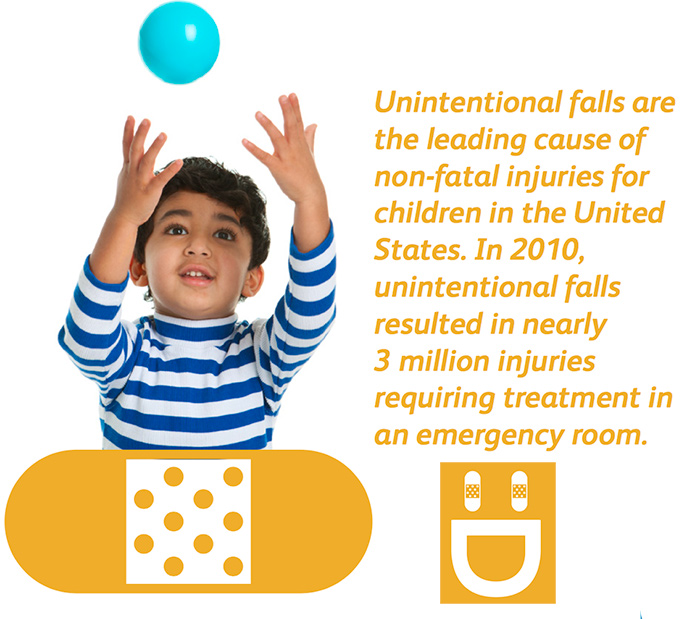Falls: A Serious Problem for Georgia’s Youngest Population
Sharing is caring!
Last week our program coordinator and one of our interns took a trip to Emory’s downtown campus to attend a Brown Bag Lecture hosted by the Injury Prevention and Research Center at Emory (IPRCE). Deceptively titled, there were no brown bags present at this lecture — it must have been “Bring Your Own Bag”. Nevertheless, they had the opportunity to join a diverse group of doctors, researchers, and students — all dedicated to the prevention of injury — and learn about “Falls: A Serious Problem for Georgia’s Youngest Population”.
Dr. Sofia Chaudhary and Dr. Sharon Nieb guided the group through the preliminary findings of their ongoing research, highlighting some key facts. For a while now, falls have been the leading cause of nonfatal injury for children birth to age 4, with infants under age 1 having the highest rate of hospitalization. The current research was spurred on by limited data on types of falls and a lack of evidence-based interventions for preventing childhood falls.
In their exploration of trauma registry data, some of the interesting facts they discovered were that:
- Most falls occur at home, usually from a height under 3.3 feet (1 meter)
- In terms of age, most cases were infants under age 1. For gender, most cases involved boys.
- The mechanism of injury varied by age, but most commonly, falls occurred from beds and furniture, followed by stairs and playground equipment.
- As a result of these falls
- Infants under age 1 had the highest rate of head injuries
- Children age 2 to 3 had the highest rate of femur fractures
- Children age 3 to 4 had the highest rate of humerus fractures
Further digging into medical data and more thorough statistical analyses are required, but the current findings clearly show that — when it comes to childhood falls — there is a serious need for improving education and awareness. Current pediatric guidelines involve falls prevention education, but Drs. Chaudhary and Nieb recommended that these guidelines should be revised to expand the education and make it more comprehensive.
Once their research is completed, they hope to be able to provide a model for this education and explore innovative options, such as combined adult and pediatric falls prevention programs. Whatever happens, we at Safe Kids look forward to working with them towards a shared goal: keeping children safe from unintentional injuries.

Resources:
Home Safety Activity Book // Tip Sheet: Everything you need to know to keep your kids safe from falls // Fall prevention from CDC
Join us on Facebook


